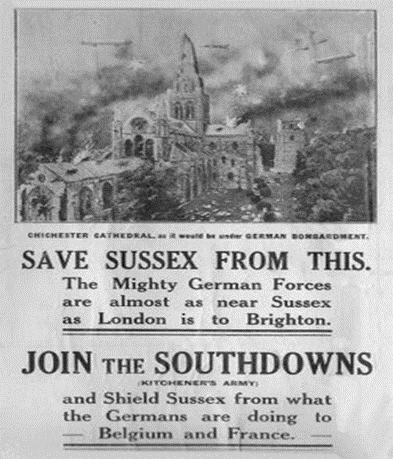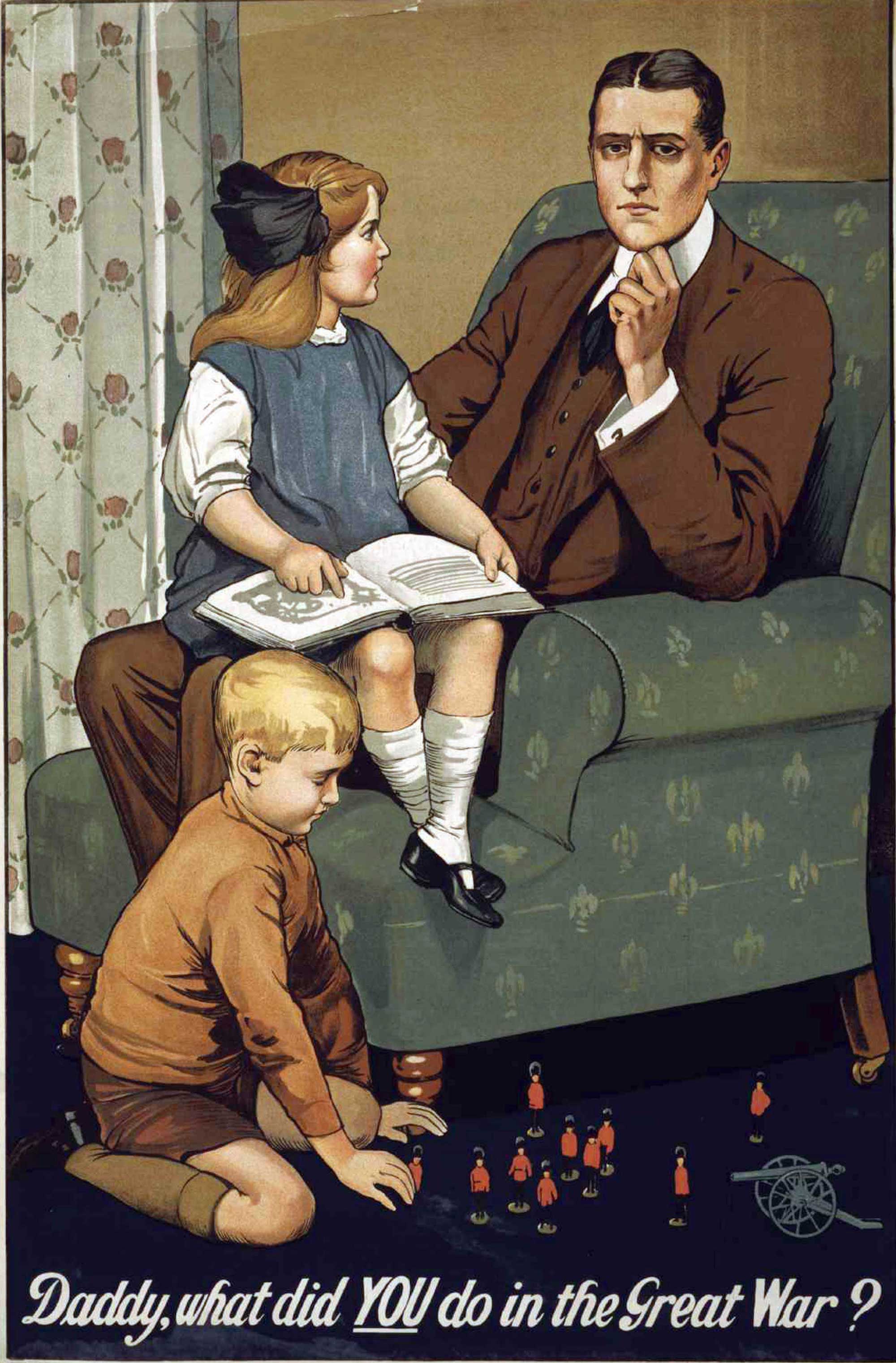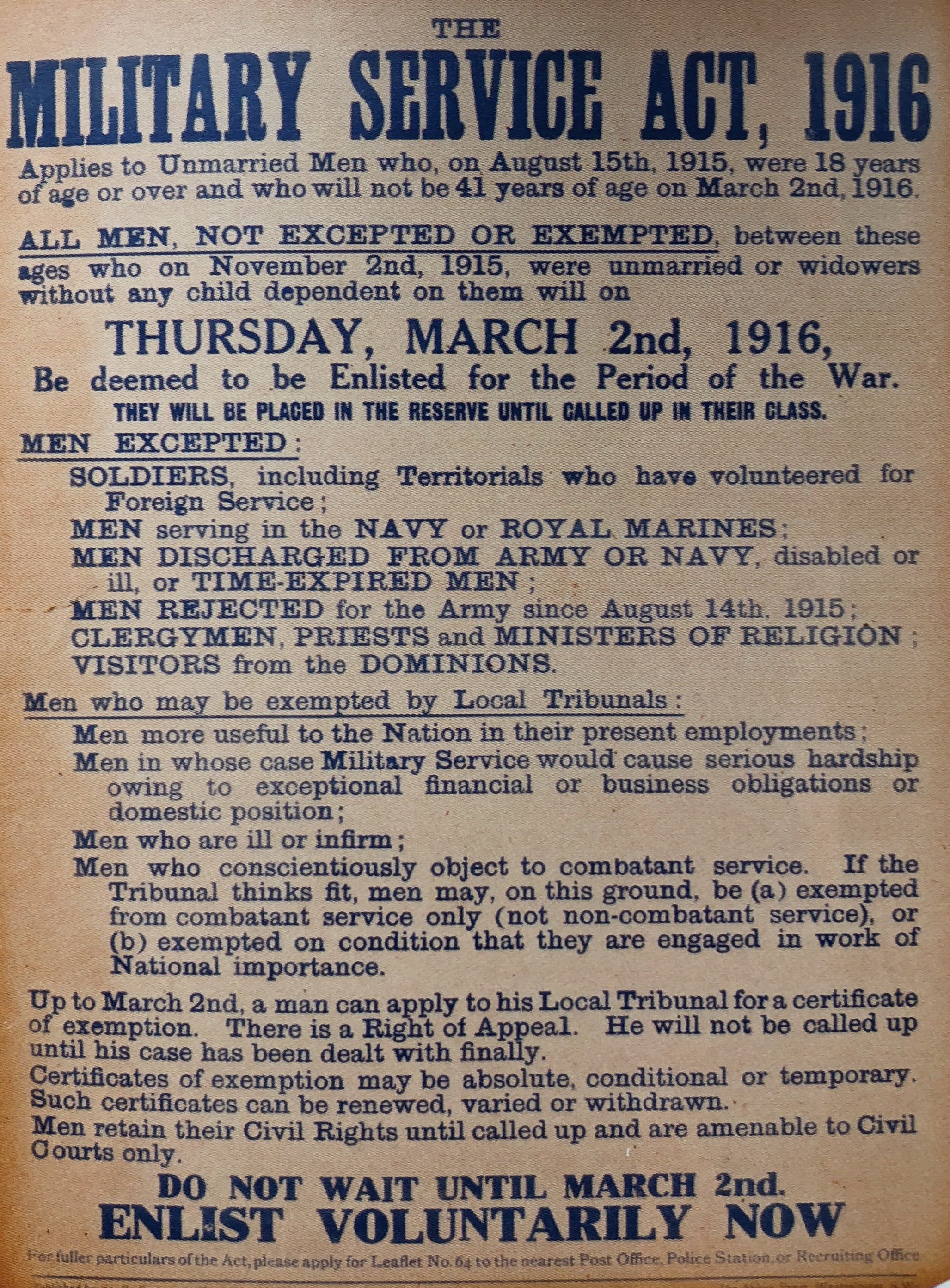Now is the time for marching,
Now let your hearts be gay,
Hark to the merry bugles
Sounding along our way.
So let your voices ring, my boys,
And take the time from me,
And I'll sing you a song as we march along,
Of Sussex by the Sea! 1
To mark the centenary of the First World War the Ashdown Forest Research Group wrote case studies of all the men—113 in total—who died while on military service during the war and who are commemorated by the war memorials at Forest Row and Hartfield, Sussex. These villages lie on the northern fringes of Ashdown Forest and traditionally have strong links with the forest. Click here to read an illustrated online essay which presents an overview of how the project was undertaken and which discusses the key findings that have emerged from the research. The studies are updated from time to time in the light of new information, and we welcome any corrections, supplementary information or photographs that may be of interest. Please contact us by email. Click on any man's name below to view their case study.
Commemorated at Forest Row
|
Baker, Pte George Frank
|
Martin, Capt William Gerald
|
|
Bannister, L/Cpl William Henry
|
Miles, Pte Walter Alfred George
|
|
Biddlecombe, Seaman Henry George
|
Mills, L/Cpl Albert
|
|
Brand, Pte Albert Victor
|
Mitchell, Pte Albert
|
|
Brooker, Pte Charles Frederick
|
Padgham, Pte Spencer
|
|
Brownlow, Capt Wilfred Herbert Cecil
|
Padgham, Pte William
|
|
Cannon, Pte Ernest Edward
|
Page, Pte Harry
|
|
Cook, Pte Sidney Herbert
|
Pannett, Pte Reginald Henry
|
|
Cox, Pte Raymond
|
Parker, Pte Edward John
|
|
Draper, Bomb. Thomas James
|
Parker, Pte William George
|
|
Dunstan, Cpl Herbert George
|
Richardson, Pte Albert Edward
|
|
Edwards, Pte Frederick Robert
|
Robinson, Lt Cyril Charles
|
|
Farley, Sh.Sm. Victor Frederick
|
Robson, Pte Robert Charles
|
|
Fisher, 2nd Lt Edmund Montagu Prinsep
|
Sands, Pte Alfred Jesse
|
|
Fisher, Capt George Kenneth Thompson
|
Sands, Pte William Thomas
|
|
Gladman, Pte Archibald Frederick
|
Simmons, Pte James
|
|
Gordon, 2nd Lt Ronald Granville
|
Simpson, Lt George
|
|
Grayer, Pte Harold
|
Sippetts, Sgt Jack Frederick
|
|
Gregory, Pte George
|
Snelgrove, Lt Sidney Henry
|
|
Grisbrook, Cpl Llewellyn Alfred
|
Southey, Dvr Frederick Charles
|
|
Holmwood, Pte Frederick
|
Styles, Pte William Joseph
|
|
Horlick, Maj Gerald Nolekin
|
Sykes, Lt Col William Ernest
|
|
Kekewich, Capt George
|
Syms, Pte Charles
|
|
Kekewich, Capt Hanbury Lewis
|
Thomsett, Pte Philip
|
|
Kekewich, Capt John
|
Tomsett, Pte Albert Ernest Standen
|
|
Kensett, Pte Henry James
|
Upton, Pte Albert James
|
|
Lawrence, Capt Michael Charles
|
Upton, Stoker Arthur
|
|
Lawrence, Capt Oliver John
|
Villiers, Lt Algernon Hyde |
|
Lucas, Capt Keith
|
Waters, Lt Eric Gordon
|
|
Luxford, BSM Bernard
|
Webber, Pte Frederick Percy
|
|
Luxford, Gnr Edward James
|
White, Pte Albert Henry
|
|
Luxford, Sgt William
|
Whitfield, Capt Nigel Bernard
|
|
Martin, Pte Walter
|
|
Commemorated at Hartfield
|
|
|
|
Bassett, Spr Albert
|
May, L/Cpl Ernest William
|
|
Bassett, Pte James Baldwin
|
Medhurst, Spr John Arthur
|
|
Baylay, Lt George Frederick
|
Mellor, Pte Benjamin Charles
|
|
Boakes, Pte Ernest Stanley
|
Melville, Lt William Woodfall
|
|
Brown, Pte William George
|
Peel, 2nd Lt Charles William
|
|
Burfoot, Pte Bertram
|
Polehampton, Lt Frederick William
|
|
Divall, Pte Edward
|
Shelley, Spr Ewbert John
|
|
Divall, Pte Reginald
|
Stevens, Pte Charles Edward
|
|
Edwards, Pte Frederick Sylvester
|
Stevenson, Pte George William
|
|
Fielder, L/Cpl Edward Cecil
|
Stevenson, Pte John
|
|
Fielder, L/Cpl Frederick Stephen
|
Sumner, Pte Alfred William
|
|
Fry, CSM Frederick Samuel
|
Tester, Pte William Edgar
|
|
Harding, Pte Ernest
|
Tibbles, Pte Frederick Charles
|
|
Heasman, Pte George James
|
Titcomb, Pte Arthur William
|
|
Hill, Gnr Frederick William
|
Vaughan, Dvr Ernest Stanley
|
|
Honeysett, Pte Thomas Edward
|
Weeding, Tpr George
|
|
Humphrey, Pte Thomas
|
Weeding, Pte John
|
|
Hyder, Pte Frank
|
Weekes, Pte David
|
|
Kennard, Pte Arthur
|
Wheatley, Pte Doctor
|
|
Killick, Pte William
|
Wheatley, L/Cpl George
|
|
Leney, Pte Cyril Henry
|
Wheatley, Pte Harry
|
|
Maskell, Pte George
|
Wheatley, L/Cpl William James
|
|
Maskell, Pte Harry George
|
Woodhams, Sgt Thomas Henry
|
|
Maskell, Pte Mark
|
|
|
|
|
|
Post-war casualty: Wheatley, O/S Charlie
|
.jpg)
Parliamentary Recruiting Committee poster, 1915
This poster serves as a reminder that the devastating fighting on the Western Front during the First World War took place only a relatively short distance away from Sussex across the English Channel. For example, Ypres, shown on the poster by the soldier's left foot, lay only 125 miles away from Ashdown Forest. The constant rumble of the heavy bombardments could be heard, as the headmaster of Fletching School, Robert Saunders, noted in a letter to his son in Canada: 'The great blot on everything is the thud and throb of the guns night and day in France, and yesterday I could even hear them indoors.' 2
(Left) Early recruitment poster for the Southdown battalions of the Royal Sussex Regiment
(Centre) The famous "Daddy, What Did YOU Do In the Great War?" recruitment poster
(Right) The start of full-scale conscription on 2 March 1916.
1
Source: The first verse of 'Sussex by the Sea', written by William Ward Higgs in 1907, and adopted as a marching song of the Royal Sussex Regiment in the First World War.
2
Source: "Copies of weekly letters of Robert Saunders, headmaster of Fletching School, to his son in Canada" (East Sussex and Brighton and Hove Record Office)
Source for all images: the Imperial War Museum
.jpg)


